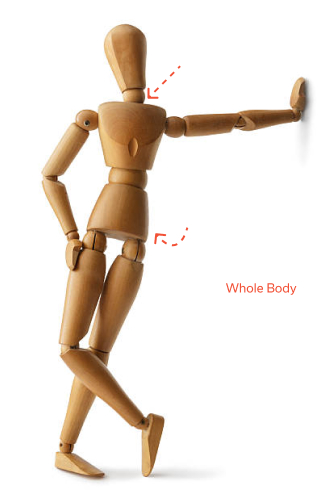Effective Treatments for Slipped Disc: A Comprehensive Guide
By Nigel ChuaMany slipped disc treatments are evidently effective, allowing individuals to resume their daily activities with minimal disruption. Effective treatments range from conservative to invasive methods, depending on the severity of the herniated disc.
Slipped discs occur when the soft cushions between your spinal vertebrae (the bones in your spine) bulge into the spinal canal, sometimes pressing on your spinal nerves. This leaves a jolt of pain shooting down your back and leg and causes a range of unpleasant symptoms due to nerve irritation. Back pain, muscle weakness, and pain numbness on the sciatic nerve radiating down one leg are just a few of them.

Slipped disc cases in Singapore most commonly develop between 30 to 50 years old. Work-related factors, particularly those involving lifting or prolonged sitting, significantly escalate risks. As people age, the chances of triggering a slipped disc generally increase.
In addition to aging, the following factors contribute to the likelihood of developing disc herniation:
- Unhealthy lifestyle choices such as smoking and being overweight
- Genetics or family history of spinal issues
- Occupational hazards, including jobs that involve heavy lifting or repetitive movements
- Poor posture and improper body mechanics, especially during activities that strain the spine
- Degenerative conditions such as osteoarthritis, which weaken the structures supporting the spine
How to Treat Slipped Disc
Rare cases of disc herniation involve noticeable symptoms such as loss of bladder or bowel control. This results from a herniated disc cutting off nerve impulses to the lower back and legs, potentially leading to a loss of sensation in the inner thighs, the back of the legs, and around the rectum.
Meanwhile, some herniated discs are mild and do not cause painful symptoms, with several even healing on their own within six weeks without treatment.
Nonetheless, it's essential to consult with a doctor or physiotherapist. They can examine your nerve activity and conduct further tests like nerve conduction studies to measure electrical impulses in your nerve signals. This will also rule out other root causes of back pain including broken bones or spinal alignment issues.
If there is evidence of nerve damage, this could require surgical options or more intensive treatments.
Otherwise, conservative or non-surgical treatment options are typically sufficient to alleviate symptoms in the lumbar region caused by slipped discs. The most common approaches to relieve pain, strengthen your back, and return to your normal routine include proper rest, pain medications, exercise, self-management methods, lifestyle modification, and physical therapy.
Let's dive into these treatment options.
Rest
Your spine needs some time to heal. While it's not advisable to stay in bed for extended periods, taking it easy for a few weeks can significantly reduce inflammation and relieve pressure. Additionally, bed rest allows the muscle tissue to relax while easing discomfort.
In a normal spine, fibrous tissues hold the gel-containing discs within a confined space between the bones. The discs between the vertebrae in the spinal column serve as shock absorbers and require a break to recover. During this time, the damaged discs have the chance to settle, relieving pressure off the affected nerves for faster recovery.
Consult with your health care provider when you'd like to resume normal activities for guidance on the appropriate level of activity during the recovery period. Transitioning to an active state will have to be gradual to prevent stiffness.
Medications
Pain medication can be particularly beneficial in the initial stages of a slipped disc. Over-the-counter pain relievers may be sufficient for mild pain. These may include:
- Non-steroidal anti-inflammatory drugs (NSAIDs) - Ibuprofen, diclofenac, or naproxen, all equipped with pain-relieving and anti-inflammatory effect
- Acetaminophen - paracetamol and painkillers
For more severe pain, a doctor might prescribe muscle relaxants, oxycodone acetaminophen combination, or stronger medications to reduce muscle spasms. It's important to use these options cautiously, especially if symptoms persist for a long time and pain relievers provide inadequate relief.
If pain and symptoms persist despite oral medications, your doctor may recommend a corticosteroid injection into the spinal nerve area. During this process, spinal imaging can assist in accurately guiding the needle placement.
Besides medications, you can also request a referral to a physical therapist who can teach you exercises aimed at reducing pain caused by a herniated disk.
Physical Therapy
Physical therapy is a cornerstone in the treatment of a slipped disc. Slipped disc physiotherapy aims to design a personalized treatment and exercise program aimed at strengthening core muscles, improving flexibility, and restoring proper spinal alignment. Key components of this therapy include stretching exercises and core strengthening to prevent future episodes.
Here in Singapore, Phoenix Rehab is known for its personalized treatment plans for muscle and joint issues like slipped discs. Therapy treatments involve back pain relief sessions and individualized care tailored to specific needs.
Under the care of a physical therapy specialist, you can expect to receive regular monitoring, follow-up sessions, and post-treatment education.
Lifestyle and Home Remedies
Simple lifestyle changes can make a significant difference in managing a slipped disc.
- Maintain a healthy weight to reduce stress on the spine.
- Apply cold packs to help reduce inflammation and heat packs to relax muscles and provide short-term relief.
- Good posture while sitting, standing, and bending forward is essential to prevent further aggravation of the condition.
These lifestyle modifications support overall spine health and decrease the strain on the affected discs and nerves. Remain consistent with your changes to prevent recurrence or trigger a new episode.
Alternative Medicine to Relieve Pain
Alternative therapies based on traditional Asian treatments, such as acupuncture and massage therapy, may provide additional pain relief from herniated discs. However, it is important to discuss these options with a physiotherapist to ensure their safety and appropriateness for your specific condition.
Injections for Targeted Relief
For some individuals, local anesthetics or anti-inflammatory injections can offer targeted pain relief, such as cortisone or steroid injections into the affected nerve root. An epidural steroid injection delivers medication into the epidural space around the spinal cord and nerve roots providing relief from pain.
It's worth noting that injections near the spinal cord may have side effects including, infection, bleeding, and nerve damage.
Slipped Disc Surgery
Orthopedic surgery is usually considered a last resort when conservative treatment options fail to provide relief. Various surgical procedures can address a herniated disc, including:
- Microdiscectomy: A neurosurgeon removes part of the herniated disc to relieve pressure on the spinal nerve.
- Cervical Spine Surgery: For herniated disks in the neck, this surgery may involve removing bone or damaged disc material.
- Lumbar Spine Surgery: Similar to cervical spine surgery, but performed on the lower back.
- Spinal Fusion: This procedure involves fusing vertebrae together with a bone graft to stabilize the spine.
- Artificial Disc Surgery: Implanting an artificial disc to replace the damaged one.
Artificial disc surgery involves making an incision through the abdomen to remove and replace the affected disc. Only a small percentage of patients qualify for this surgery, requiring disc degeneration in only one disc.
If you experience the following symptoms, you may qualify for spinal surgery:
- Radicular pain limiting normal activity or quality of life
- Development of progressive neurological deficits like leg weakness and/or numbness
- Loss of normal bowel and bladder functions
- Difficulty standing or walking
- Ineffectiveness of medication and physical therapy
- Reasonable health status
Managing Risks and Expectations
Recovery from a slipped disc takes time, with most individuals seeing significant improvement within six weeks with non-surgical treatment options. It is essential to manage expectations and be patient. Discussing risk factors, such as sports injuries, repetitive bending or lifting, smoking, and a family history of disc herniation with your doctor, can help in preventing future episodes. Maintaining a healthy weight, practicing good posture, and strengthening your core are key preventive measures.
This comprehensive guide provides an overview of the effective treatments for a slipped disc. If you are experiencing symptoms such as back pain, neck pain, or other signs of a herniated disc, seek medical attention promptly. Early diagnosis and treatment can significantly improve your prognosis and help you return to a pain-free life.
Browse other articles by category
Physiotherapy for Knee Pain Physiotherapy For Slipped Disc Physiotherapy for Neck Pain PHYSIOTHERAPY
PHYSIOTHERAPY
 Hand Therapy
Hand Therapy
 Alternative
Alternative
 Massage
Massage
 Traditional Chinese Medicine Treatment
Traditional Chinese Medicine Treatment
 Rehab
Rehab
 Physiotherapy For Lower Back Pain
Physiotherapy For Shoulder Pain
Orthopedic Doctors, Insurance & Healthcare
Physiotherapy For Upper Back Pain
Frozen Shoulder
Physiotherapy for Back Pain
Physiotherapy For Lower Back Pain
Physiotherapy For Shoulder Pain
Orthopedic Doctors, Insurance & Healthcare
Physiotherapy For Upper Back Pain
Frozen Shoulder
Physiotherapy for Back Pain

 Whatsapp us now
Whatsapp us now